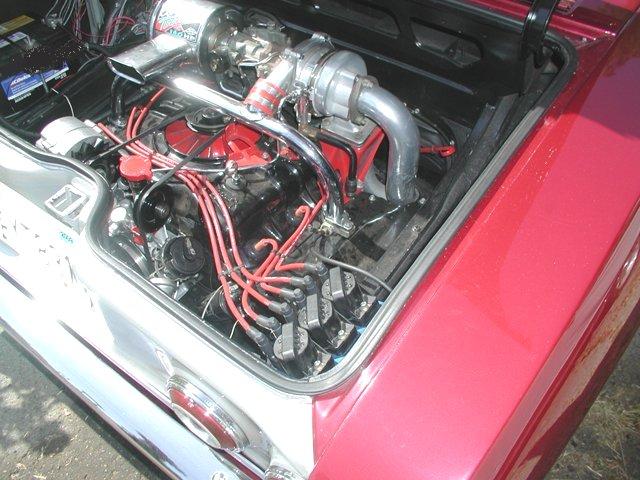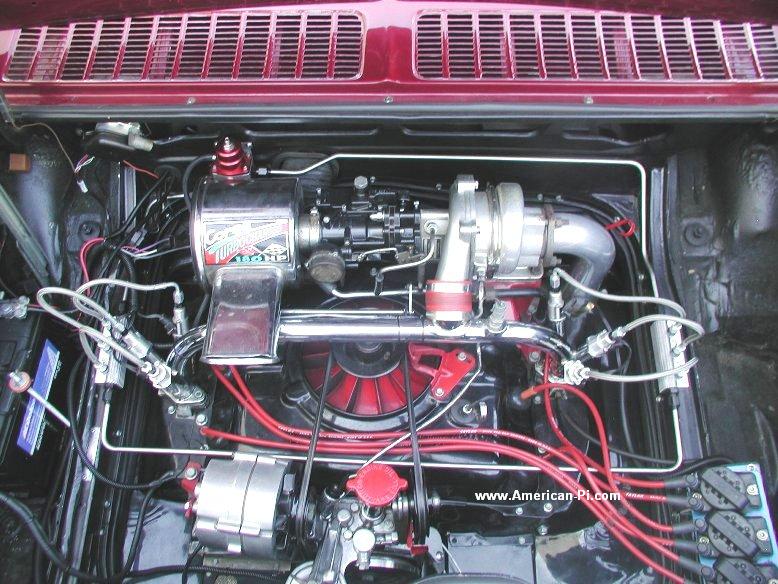1965 Corvair Turbo ‘Bolt-On’ EFI Project

Scope: Installation of a crank triggered, distributor less ignition system and electronic fuel injection control. All systems should be installed without any engine modifications. All modifications must be ‘bolt on’ and with no permanent engine changes. Configuration must also be able to seamlessly migrate to an individual runner port EFI system in the future with no reprogramming of the EFI system.
Note: All dyno tests are run on a DynaPack Hub Dyno and provided by Simtec Motorsports.
Phase 1. Establish base line stock engine power outputs via tests. – Completed
Phase 2. Design, test, fabricate and complete all parts required for the conversion. - Completed
Phase 3. Install EFI computer and associated wiring. - Completed
Phase 4. Install custom in-tank EFI pump conversion and install new fuel feed line. - Completed
Phase 5. Install crank trigger and mount coil packs. - Completed
Phase 6. Gather engine operating data via EFI system sensors to establish stock
engine performance and data points. - Completed
Phase 7. Activate crank trigger and coil packs. Set ignition timing to duplicate a stock turbo
timing curve. - Completed
Phase 8. Dyno engine power output. This will document the power difference between a stock
ignition system and a crank triggered, distributor less ignition system. - Completed
Phase 9. Optimize timing curve for engine. Dyno engine power output. This will document the
power difference between a stock ignition map and an optimized map afforded by a
programmable ignition system. - Completed
Phase 10 Install custom intake cross-over on engine. Dyno engine power output. This will
document any power difference between a stock cross-over and the modified unit. No
difference is expected, but a new baseline must be establish for accurate testing and
reliable results. - Completed
Phase 11. Activate injectors on custom intake cross-over. Tune engine for proper Air / Fuel ratio
across all operating parameters. Dyno engine power output. This will document the power
difference with the precise fuel control afforded by EFI. Note: Stock carb is still installed but
disconnected from the fuel supply so it is not delivering fuel. - Completed
Phase 12. Remove stock carb and install modified carb converted to a throttle body. Dyno engine
power output. This will document the difference in power output due to the air flow
restriction of the stock carb and a throttle body with out the triple booster venturi or
main venturi as the stock carb has. - Completed

Completed 'bolt-on' EFI Turbo test project.
Dyno tests synopsis.
The completed 'bolt-on' EFI Turbo test project produced twice the power of the engine in stock configuration.
All tests were done on the same day, same dyno, same fuel, etc. Once the car was attached to the dyno, it was not removed until all tests were completed. At least four dyno pulls were made to verify each test. No engine parts were removed, altered, adjusted or modified during the tests, with the exception of Phase 12 where the stock YH carburetor was replaced by a YH converted to a throttle body.
Dyno results, pictures and additional information from the above tests will be posted as time permits.
For other 'bolt-on' ideas to add EFI to your Corvair Turbo, visit Blackhawk Engineering for their YH TBI style throttle body